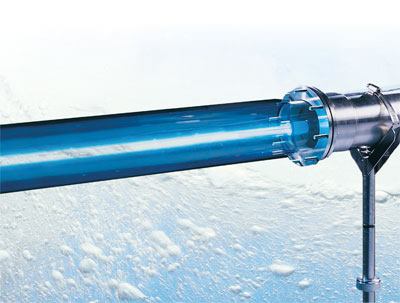MORE INFORMATION
- In the Zone
Tracking down an ozonator problem can take some special skills, but a checklist of common issues makes the job much easier.
Ultraviolet (UV)-generated ozone is an affordable option that’s becoming more popular for residential applications.
In addition, a growing number of service technicians are supplementing both UV and corona discharge (CD)-generated ozone with UV sanitation, a separate process that uses certain wavelengths of light to break down the molecular structure of many microorganisms.
“I use a little chlorine to maintain a sanitizer residual, ozone to oxidize the contaminants in the water, and UV to keep microbes under control,” says Steve Kenney, owner of SRK Pools in East Hampton, N.Y.
“The three of them together are a really powerful combination.”
It can be easy to confuse UV-generated ozone with UV sanitation, so here are a few helpful points of difference:
Nature of effect
UV ozone generators use invisible light waves to free oxygen atoms (O) from oxygen molecules (O2), allowing them to join into ozone molecules (O3), which are powerful oxidizers. UV sanitizers send similar light waves directly into the pool’s water, breaking down the molecular composition of microorganisms and other contaminants — but produce no oxidation.
Area of effect
UV ozone generators create a concentration of ozone molecules in the air that passes through their central chamber, then disperse bubbles of ozone-packed air into the pool’s water. UV sanitizers send light waves directly into the water that circulates through their central chamber, then pass that partially sanitized water back out into the pool’s circulation system.
Speed of effect
UV-generated ozone destroys contaminants much quicker than chlorine does; it typically takes 30 minutes or less to destroy more than 99 percent of many microorganisms. UV sanitizers achieve a similar level of microorganism destruction upon initial contact.



